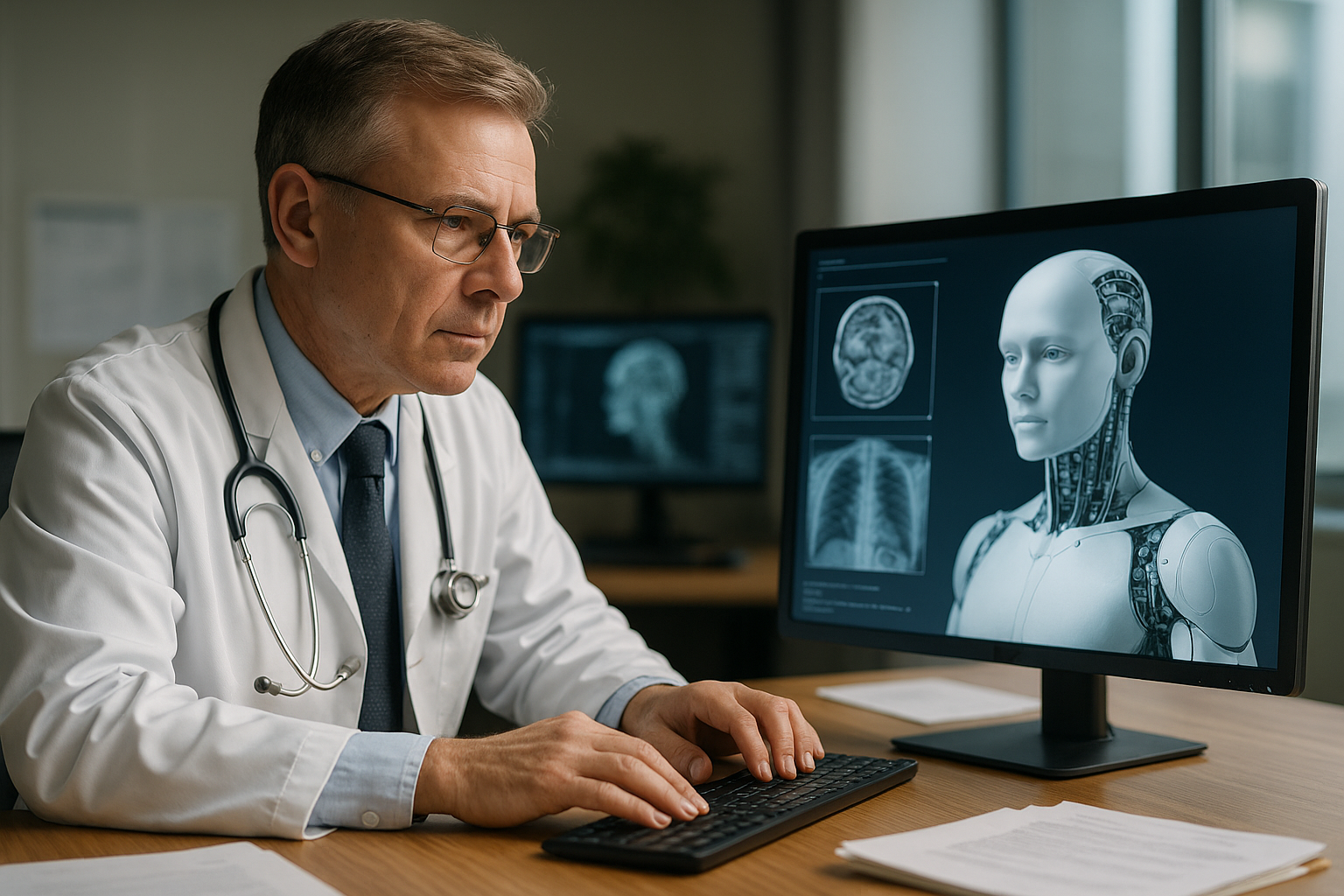Generative AI is revolutionizing healthcare but safety and bias risks loom
Transparency and accountability remain unresolved. Clinicians need explainable AI systems that can justify their recommendations. The study calls for interpretable architectures and traceable decision pathways, ensuring that responsibility lies with human supervisors rather than opaque algorithms.

Generative Artificial Intelligence (GenAI) is rapidly transforming healthcare, bringing both unprecedented potential and serious ethical and operational challenges, according to a new global study from the University of Limerick.
The paper titled "Generative Artificial Intelligence in Healthcare: A Bibliometric Analysis and Review of Potential Applications and Challenges" and published in AI offers one of the most comprehensive mappings to date of how GenAI is being applied in clinical practice, patient communication, medical education, and hospital management, and the concerns it raises around safety, privacy, and fairness.
The bibliometric review analyzed 267 peer-reviewed articles published between January 2023 and February 2025, tracking publication trends, collaboration networks, and thematic evolution in the field. The findings reveal that GenAI's integration into healthcare has accelerated at a dramatic pace, with an annual growth rate exceeding 44% and a clear dominance of work emerging from institutions in the United States, the United Kingdom, and Canada.
Transforming medical practice through generative intelligence
Generative AI is reshaping key areas of healthcare, particularly in diagnosis, documentation, and decision support. Large language models and image-generation tools are increasingly used to draft radiology reports, summarize patient records, and assist clinicians in forming differential diagnoses. These systems are capable of synthesizing medical data into coherent narratives, generating treatment recommendations, and even simplifying complex information for patients.
The analysis shows that these technologies are being tested for clinical documentation, triage, and workflow automation, tasks that often strain healthcare personnel. Hospitals using pilot AI systems reported substantial improvements in speed and efficiency, with medical summaries generated in seconds rather than hours. However, the authors emphasize that while GenAI may enhance productivity, its role remains assistive, not autonomous. Human supervision is indispensable to verify accuracy and ensure patient safety.
Another key finding highlights the potential for GenAI in patient communication. Language models can convert medical jargon into accessible explanations, helping patients better understand diagnoses and treatment plans. Early studies also point to the use of generative chatbots for mental health support and chronic disease management, with encouraging engagement metrics. Still, variability in content accuracy remains a concern, as models occasionally produce misleading or incomplete medical advice.
The study identifies education and training as an emerging frontier. Medical schools are experimenting with AI tutors that simulate patient cases and interactive diagnostics. These digital mentors are proving valuable in enhancing critical thinking and communication skills, but their pedagogical impact depends heavily on consistent validation and alignment with clinical standards.
Ethical, technical and regulatory barriers to safe deployment
GenAI's rapid adoption raises serious ethical and operational questions. The most pressing concern is accuracy. Because large language models generate probabilistic rather than factual responses, they can fabricate data, an issue known as hallucination, that may endanger patient care if unverified. The authors stress that without rigorous oversight, even small errors in AI-generated content could cascade into clinical risks.
Data privacy is another central issue. Many generative systems require vast datasets for training, including sensitive medical information. Ensuring compliance with GDPR and HIPAA-like regulations demands advanced anonymization and local model deployment strategies. The study highlights the emerging trend of hospital-based LLMs, where models are fine-tuned within institutional boundaries to protect patient confidentiality.
The review also raises concerns about bias and fairness. AI models trained predominantly on Western datasets may underperform for underrepresented populations, reinforcing existing health disparities. Addressing such bias requires diverse, global datasets and clear auditing mechanisms.
Transparency and accountability remain unresolved. Clinicians need explainable AI systems that can justify their recommendations. The study calls for interpretable architectures and traceable decision pathways, ensuring that responsibility lies with human supervisors rather than opaque algorithms.
Finally, the authors discuss governance challenges. Rapid innovation has outpaced regulation, creating uncertainty over liability in AI-assisted care. The review urges policymakers to adopt adaptive frameworks that encourage innovation while enforcing safety and equity standards.
Mapping global trends and research gaps
The bibliometric mapping provides a data-driven snapshot of the field's evolution. The United States leads in publication output and international collaboration, with institutions such as Harvard Medical School, Stanford University, and the National Institutes of Health among the most influential contributors. The Journal of Medical Internet Research, IEEE Access, and NPJ Digital Medicine emerged as key publishing platforms.
Keyword analysis shows that GenAI research in healthcare clusters around five dominant themes:
- Clinical applications – diagnosis, documentation, and decision support;
- Patient interaction – communication, education, and engagement;
- Ethics and governance – bias, privacy, and accountability;
- Medical education – simulation and adaptive learning;
- Healthcare innovation – workflow optimization and predictive analytics.
The study notes that while fields like radiology, dermatology, and mental health are seeing rapid progress, areas such as emergency medicine, rehabilitation, and geriatrics remain underexplored. The authors recommend targeted investment in these domains, where automation could relieve high-stress workloads and improve outcomes for vulnerable populations.
Emerging research trends also show a move toward multimodal AI systems that integrate image, text, and sensor data for holistic patient modeling. This shift signals the next phase of GenAI, moving beyond language generation to comprehensive health intelligence platforms.
The road ahead for responsible AI in medicine
To sum up, the future of healthcare will be co-piloted by humans and AI, not replaced by algorithms. Generative models can enhance diagnostic precision, streamline clinical workflows, and expand access to medical information, but their power must be balanced by human judgment, ethical oversight, and robust data governance.
According to the authors, sustainable adoption will require cross-disciplinary collaboration among clinicians, engineers, ethicists, and policymakers. Transparent reporting, bias mitigation, and continuous model evaluation should become standard practice in healthcare AI deployment.
- FIRST PUBLISHED IN:
- Devdiscourse









